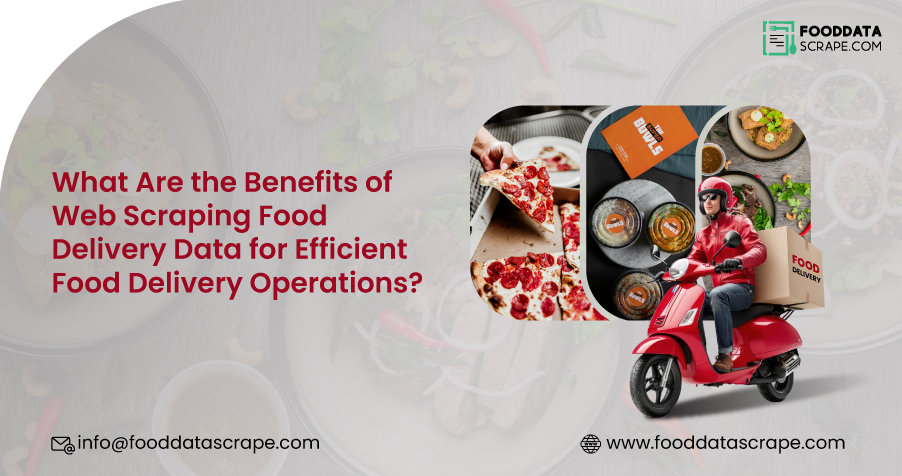Introduction
The food delivery industry has evolved rapidly with players like Uber Eats, DoorDash, Foodpanda, and Deliveroo. With rising consumer demand for convenience, organizations must streamline operations to compete. Web Scraping Food Delivery Data for Efficient Food Delivery Operations enables organizations to scrape valuable insights from food delivery sites. With Web Scraping for Real-Time Food Delivery Data, firms can analyze restaurant menus, pricing data, consumer ratings, and delivery operations. Data-driven practice enhances the efficiency of services, reduces costs, and increases customer satisfaction. With Real-Time Data Scraping for Food Delivery Optimization, firms can also react to market trends, reduce delivery routes, and optimize prices. Access to real-time data and its analysis enables businesses to respond to emerging consumer needs and stay current in the competitive food ordering pace.
The Role of Web Scraping in Food Delivery Operations
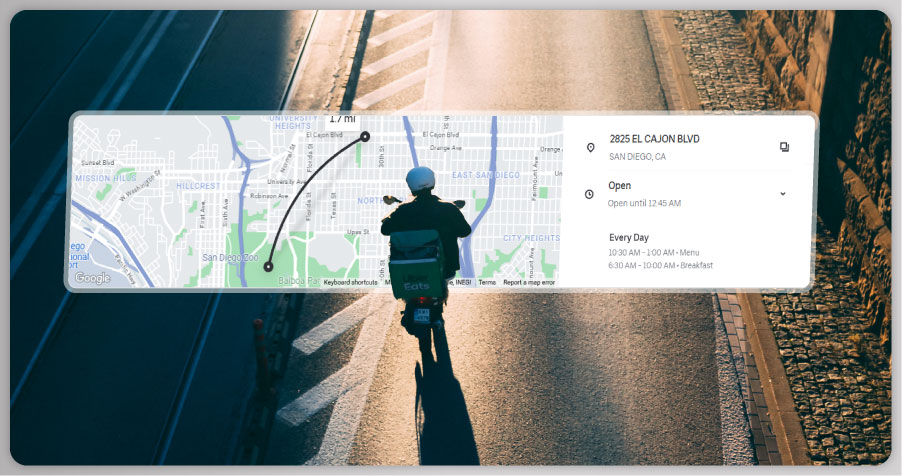
Web scraping is a game-changer for food delivery companies, restaurants, and third-party logistics providers. By automating the extraction of critical data from food delivery platforms, businesses can analyze market trends, enhance operational efficiency, and improve customer satisfaction. Extracting Real-Time Data for Food Delivery Operations allows companies to monitor consumer preferences, pricing strategies, and delivery performance, leading to informed decision-making and streamlined services.
1. Competitive Pricing Strategy: Pricing is key in the food delivery industry, as customers choose the most cost-effective options. To stay competitive, businesses need continuous insights into competitor pricing, discounts, and promotions. Scrape Food Delivery Data for Real-Time Price Tracking to:
- Gather up-to-date pricing information from rival restaurants and delivery platforms.
- Analyze price fluctuations based on demand surges, time of day, and regional promotions.
- Adjust prices dynamically to attract customers while ensuring profit margins.
2. Menu Optimization and Trend Analysis: The right menu items are crucial for maximizing sales and meeting customer expectations. Restaurant Menu Data Scraping enables businesses to:
- Identify the most popular dishes ordered in different regions.
- Track food trends and seasonal demand shifts to refine menu offerings.
- Spot gaps in the menu and introduce high-demand items that align with market preferences.
3. Delivery Time and Efficiency Tracking: Fast and reliable delivery is a top priority for food delivery services. Real-Time Food Delivery Price Data Scraping helps businesses enhance logistics by:
- Monitoring average delivery times across various locations and competitors.
- Detecting bottlenecks, such as peak-hour slowdowns and inefficient dispatching.
- Utilizing data-driven insights to optimize delivery routes, minimize delays, and cut operational costs.
By leveraging web scraping for real-time food delivery insights, businesses can stay ahead in a highly competitive market, ensuring improved efficiency, better pricing strategies, and enhanced customer experiences.
Enhancing Food Delivery Logistics Through Data Insights
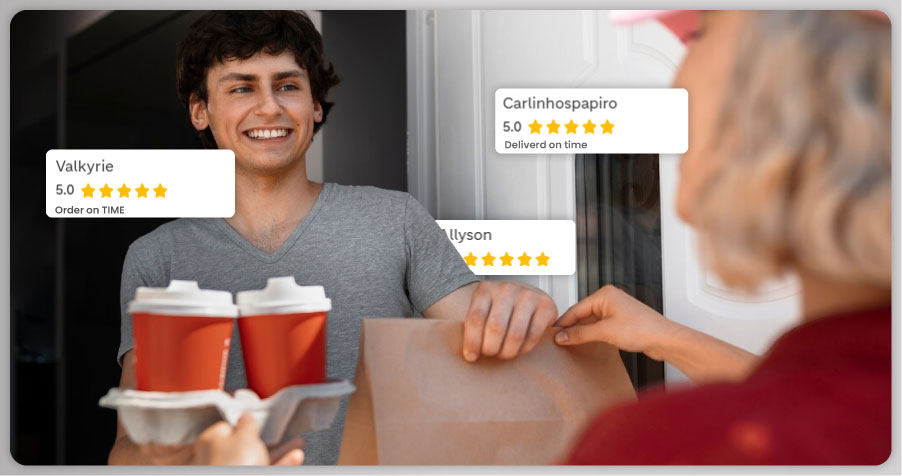
A seamless and positive customer experience is essential for retaining users and ensuring the success of a food delivery business. Analyzing customer feedback and reviews across multiple platforms provides valuable insights that help businesses improve service quality, optimize restaurant partnerships, and refine pricing strategies. Leveraging Restaurant Data Intelligence Services , businesses can extract and analyze key performance metrics to enhance overall customer satisfaction.
1. Analyze Customer Sentiments: Customer sentiment analysis helps businesses understand user preferences, pinpoint service issues, and maintain a competitive edge. By extracting insights from Food Delivery Datasets , companies can:
- Detect recurring customer complaints and address service gaps.
- Monitor satisfaction trends over time to enhance user experience.
- Benchmark service quality against competitors and implement necessary improvements.
2. Improve Restaurant Partnerships: Strong partnerships with high-performing restaurants are critical for maintaining a reliable food delivery network. Analyzing restaurant ratings, order volumes, and customer reviews using Restaurant Data Intelligence Services allows platforms to:
- Identify top-rated restaurants and strengthen strategic collaborations.
- Remove or optimize underperforming restaurant listings to uphold service quality.
- Provide actionable insights to restaurants, helping them improve food quality, packaging, and delivery efficiency.
A Food Price Dashboard also enables businesses to track pricing trends and ensure competitive menu pricing. By leveraging real-time data and customer insights, food delivery platforms can enhance service quality, optimize partnerships, and drive long-term customer loyalty.
Customer Experience and Sentiment Analysis
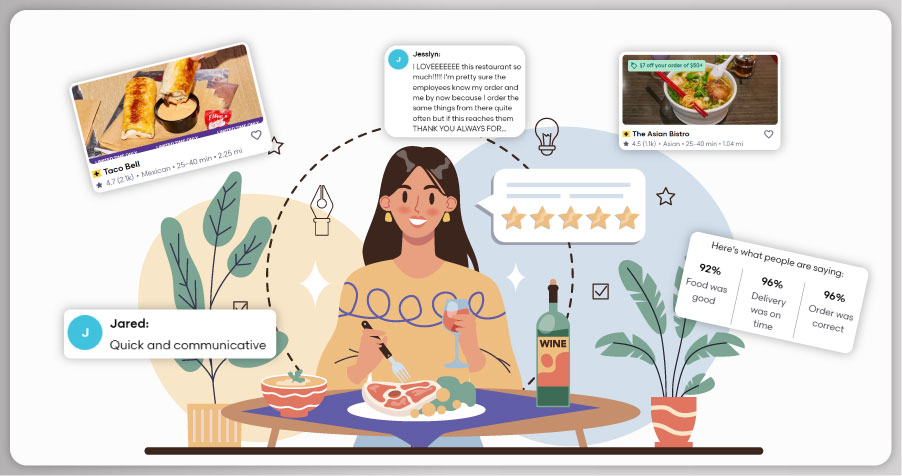
A positive customer experience is key to retaining users and growing a food delivery business. Web scraping customer reviews and feedback from various platforms can help businesses:
1. Analyze Customer Sentiments: By extracting and analyzing customer reviews and ratings, businesses can:
- Identify common customer complaints and areas that need improvement.
- Track customer preferences and satisfaction levels over time.
- Compare service quality with competitors and implement necessary enhancements.
2. Improve Restaurant Partnerships: Scraping data on restaurant ratings, order volumes, and customer feedback enables food delivery platforms to:
- Identify high-performing restaurants and strengthen partnerships.
- Remove or improve underperforming restaurant listings to maintain service quality.
- Offer restaurant-specific insights to improve food quality and delivery standards.
Market Expansion and Business Growth Strategies

Web scraping provides valuable data-driven insights for food delivery services looking to expand into new markets. Businesses can use scraped data to:
1. Identify Potential Market Opportunities: By analyzing food trends, customer preferences, and competitor presence in different regions, companies can:
- Determine the viability of entering a new market.
- Adjust service offerings to match local consumer demands.
- Optimize marketing strategies based on regional food preferences.
2. Monitor Industry Trends and Innovations: The food delivery industry constantly evolves, with new business models and technological innovations emerging. Scraping data from industry reports, competitor platforms, and customer forums helps businesses:
- Stay updated on the latest trends, such as ghost kitchens, eco-friendly packaging, or subscription-based meal plans.
- Adopt emerging technologies like AI-based food recommendations and automated delivery bots.
- Benchmark performance against industry standards and adapt accordingly.
Challenges and Ethical Considerations in Web Scraping
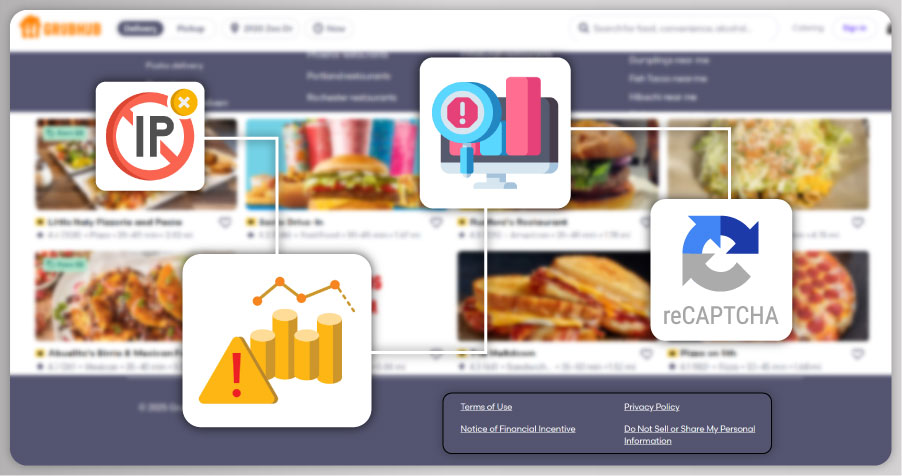
While web scraping offers numerous benefits, businesses must consider ethical and legal considerations. Some key challenges include:
1. Legal and Compliance Issues: Many food delivery platforms have terms of service that prohibit automated data extraction. Companies must:
- Ensure compliance with website policies and data protection laws.
- Use ethical scraping techniques, such as API-based data retrieval, where available.
- Avoid overloading servers or disrupting platform functionality.
2. Data Accuracy and Maintenance: Extracted data must be accurate and up-to-date for meaningful analysis. Businesses should:
- Implement robust data validation methods to filter out errors or inconsistencies.
- Regularly update scraping scripts to adapt to platform changes.
- Cross-check data sources to ensure reliability.
3. Platform Blocking and Anti-Scraping Measures: Many platforms deploy anti-scraping measures such as CAPTCHAs and IP blocking. To overcome these challenges, businesses can:
- Use proxy rotation and user-agent switching to mimic human browsing behavior.
- Leverage headless browsers and advanced scraping techniques for efficient data extraction.
- Build partnerships with data providers to access structured datasets legally.
How Does Food Data Scrape Help Collect Food Delivery Data?
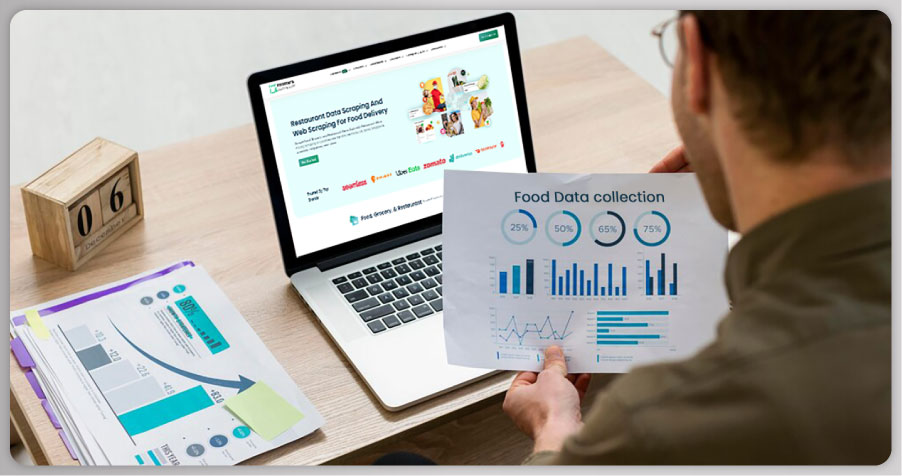
- Comprehensive Data Extraction – We scrape real-time food delivery data, including restaurant menus, pricing, ratings, delivery times, and customer reviews from leading platforms.
- Customized Data Solutions – Our scraping services are tailored to your business needs, ensuring relevant insights for market analysis and competitive intelligence.
- High Accuracy & Fresh Insights – We use advanced algorithms to deliver structured, error-free, and up-to-date food delivery datasets for better decision-making.
- Scalable & Automated Solutions – Our automated scraping tools efficiently collect large volumes of data, allowing seamless scalability for businesses of all sizes.
- Regulatory Compliance & Ethical Practices – We ensure compliance with data protection laws and ethical guidelines, delivering legally sourced data without violating terms of service.
- Actionable Market Intelligence – Gain deep insights into consumer preferences, restaurant performance, and delivery trends to optimize pricing strategies and improve service quality.
Conclusion
Web scraping food delivery data has become an invaluable tool for businesses looking to optimize operations, enhance customer experience, and drive business growth. By leveraging real-time data on pricing, menus, delivery efficiency, customer sentiment, and industry trends, food delivery services can make informed decisions that improve profitability and competitiveness. However, ethical considerations, compliance with legal regulations, and data accuracy remain critical to ensuring sustainable and responsible data extraction practices.
As the food delivery industry evolves, businesses that harness data-driven insights will gain a significant advantage in delivering seamless, efficient, and customer-centric services.
If you are seeking for a reliable data scraping services, Food Data Scrape is at your service. We hold prominence in Food Data Aggregator and Mobile Restaurant App Scraping with impeccable data analysis for strategic decision-making.

















































































